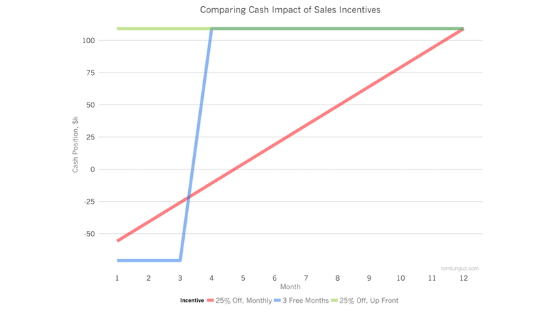Management strategies and time is the essence of success. These are the key to success. Also, as we know, “time and tide wait for none so make sure you fully use all your time and the opportunities coming for you. Considering it as tangible or intangible is entirely one’s personal opinion, but when it comes to the significance of the 24 hours in a day, everyone has a single voice— money and time decide everything. Making the best out of whatever time a person gets requires planning and a series of right decisions; there’s no room for mistakes but then to err is the trait of being human. And when it comes to entrepreneurs for health flourishment who are striving to disrupt the established notion with revolutionary breakthroughs, time easily takes the top stop in the list of most expensive commodities. Child or adult, knowing a few time and management strategies will only do well so here are a few techniques allowing a person to maximize efficiency and minimize stress. These are being presented with a special focus on startup founders.
Understand Whether You’re A Lark Or A Night Owl
Some of us sleep early and like to work during the day while for others, the productivity index is at peaks during the late hours. Hence, in order to be extremely efficient, it’s worth knowing when you function at your best. But make sure you don’t procrastinate with you work this which means that if the job has to be submitted in the afternoon, you started working on it a few hours before the submission.
Also Read:-21 Restaurant Marketing Strategy: Ideas and Trends in 2019
The Workplace Should Be Conducive
It may a cubicle, a room, or simple table-chair setup in some corner—keeping the desk organized and clean definitely increases productivity. Save yourself some time by not bin rummaging over a cluttered table, desperately searching for that piece of paper! Create yourself an environment that interests you to work and the same with your workers. Make a chillax room in the office where people can take a break and enjoy themselves because recent reports say that people who work with few breaks, work more efficiently.

Also Read:-How to Use the 10 year Challenge for Your Business
Document Everything ASAP
As the founder of the next big venture or endeavor, a person has a lot of tasks at hand. In this case, documenting processes and requirements make things easier for later stages. A lot of mobile apps are out there, serving multiple purposes such as a memo combined with an advanced planner. Make different documents for different projects and keep them in separate files, without mixing them. Also, do this once you complete the project. This will save you from a hectic day procedure of searching for everything and you will be saving some time also.

Also Read:-Digital Marketing Business Ideas
Prioritize Accordingly
Working on the presentation which you have in the afternoon or the client meeting in the evening? Which will you choose among both? Here comes what we call “Prioritizing “. Not every undertaking has the same priority. It’s essential to categorize to-do actions into not so important, important, and extremely important. The temptation eve to complete menial tasks allures each one of us. But then, the resistance needs to be built up in order to avoid such situations in the first place. Make the plans beforehand and always have a mental plan for your works.
Also Read:-How to Find the Target Market for your Startup
Agility Both Physically And Mentally
It makes sense that in business everything doesn’t go according to your choice. Here, responsibilities can come out of nowhere, anytime or any place. Thus, the agility of the mind accompanied by the required physical flexibility budget is more than a competency—it is a necessity. As an entrepreneur, activities such as traveling for delivering pitch decks, meeting potential investors usually come up unexpectedly and hence the stressing on agility. So keep your agility high because you never know when that perfect agility of physical and mental will be your need to crack that big deal.

Also Read:-Low-Cost Marketing Strategies For Startups
Maintain The Calm State Of Mind
A peaceful mind always makes the perfect decision. Although, it’s not that easy as it can be said. There will desperate times where there will be calls for desperate measures. And in such cases, temperament remains volatile; there may be a sudden outburst of emotions. Is it going to escalate progress? That’s a strict no. So, practice techniques such as meditation and yoga to transition smoothly in this long and challenging entrepreneurial development path. Because of the calmer, you are, the more efficient decision you will be making for your business.
Also Read:-A Complete Guide to Hashtags Marketing
Multitask Only Wherever It’s Feasible and Plausible
Multitasking is the coolest technique to handle things but not always it’s the best thing to do in the situation. Multitasking is often seen in a negative sense. But then, people do multitask and that too effectively. This skill varies greatly according to individual capacities. So, see how feasible study it’s for you before actually bringing it into practice. Master the skill first, then use it when it’s necessary. Also, don’t compromise position with the efficiency of the work you are multitasking because that hitch can cause you huge loss. Hence, multitasking has both pros and cons, so use it wisely.
Also Read:-Top 15 Tips for Marketing Startup in 2020
Involve Others
Delegation isn’t a synonym of slacking evolution off. But when doing something innovative and ingenious, leaders and founders should delegate secondary activities to fellow members and take care of the major responsibilities themselves. Good teamwork skills make work easier and also more ideas can be given to make the work more efficient. There may be less room for error as many people will be checking and analyzing the work. Hence, this allows multiple activities to be covered in the same amount of time. The end results which come are efficient and good also.

Also Read:-Top 10 Best Marketing Strategies for Your Product Launch
Identify Sources Of Distractions
It can be anything—television, unwanted guests or even annoying colleagues relationship. These things can break your concentration level and it may take you long to get back to the focus point to start again.
So, try to stay away from them especially when doing important activities that call for focus, concentration and undivided attention.
Also Read:-How To Use Instagram For Business
Incorporate The ‘Pareto Principle’
If you are able to get 80% of the results with just 20% of the efforts, then the future’s looking bright for you! Backed by scientific evidence principle, try to ensure that daily activities revolve around the 80-20 rule. It may seem difficult at first, but once you get the hang of it, reap the rewards!

Also Read:-Uncommon Startup Marketing Ideas you Must Try
Don’t Wait
Staying idle isn’t a bad habit but don’t spend too much of your precious time waiting. Even two minutes are sufficient to complete a task, provided you have a knack for identifying and classifying activities according to the time they require.
Also Read:-Best ways to find Business Ideas
Take Breaks
This may seem to be in stark contrast with earlier point but both signify something different. Continuous grinding can reduce productivity. Hence, it is advised to take breaks in-between to ensure that the fuel keeps running, and to keep your mind fresh to cultivate more new and productive ideas.

Also Read:-Best Business Development Tools For More Profit
Actions Speak Louder Than Words
Don’t waste time in preaching stand. Practice what you say and that too with utmost dedication and sincerity. Instead of wasting time suggesting those around you about what they should do, let others take inspiration from your way of handling things. After all, no one likes to be friends with a hypocrite.




















